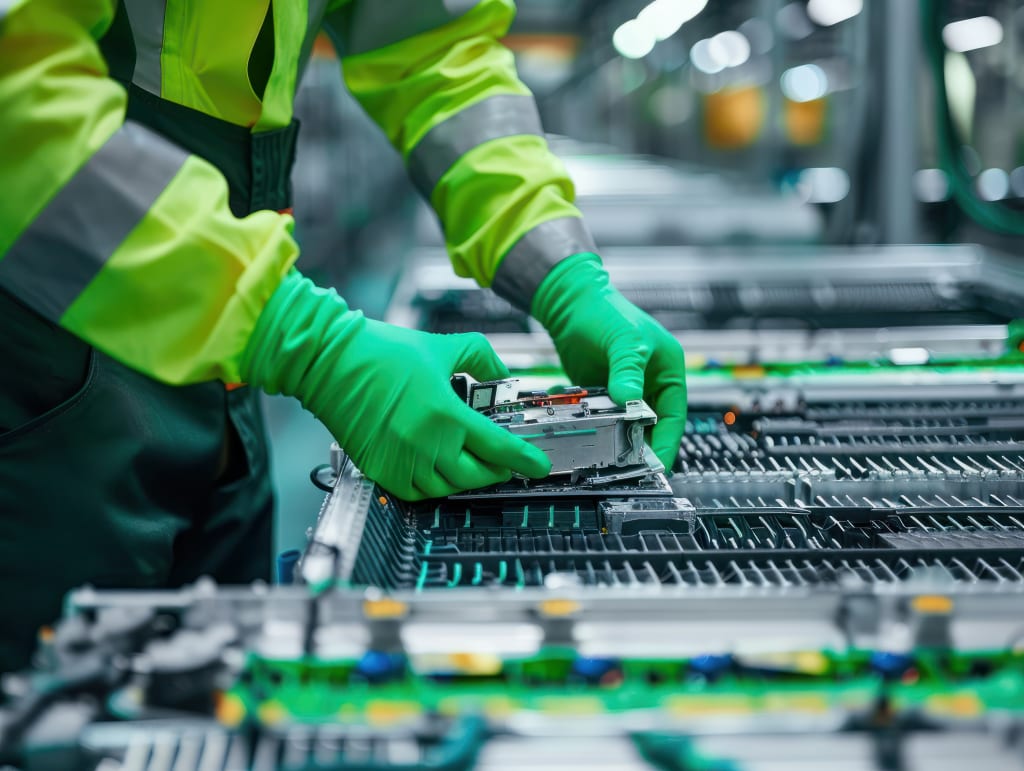The Ministry of Industry and Information Technology (MIIT) in China has introduced revised guidelines for battery recycling companies that aim to be state-approved or “whitelisted.” The draft document, titled “Industry Standard Conditions for Comprehensive Utilization of Waste Power Batteries of New Energy Vehicles (2024 Edition),” is currently open for industry consultation. The previous standards were introduced in 2019 providing broad guidelines for the industry. The new guidelines set out extensive criteria for companies in the battery recycling sector, covering aspects such as facility specifications, business structures, and technology standards. This initiative reflects the Government’s commitment to enhancing the efficiency, safety, and environmental sustainability of the battery recycling industry.

Recovery rates
The new proposal outlines stricter recovery rate requirements, with the lithium recovery rate now set at 90%, an increase from the 85% proposed in 2019. Recovery rates for nickel, cobalt, and manganese remain unchanged at 98%. Additionally, the draft introduces new recovery targets of 98% for copper, aluminium, and rare earth metals, which were not specified under previous guidelines.
Environmental standards
Significant updates have been made to the environmental standards that facilities must meet. For instance, the energy consumption for producing one tonne of lithium carbonate is capped at less than 2,220 tonnes of coal equivalent, approximately 18 MWh. The document also mandates that fluorine emission recovery must exceed 99.5%, a new inclusion given that fluorine, which can form the highly corrosive gas hydrogen fluoride, was not previously addressed. Moreover, wastewater recycling at these facilities is required to achieve a 99% efficiency rate, and all plants must be located on industrial land.
Utilisation rates and battery reuse
The draft standards also stipulate that if a facility’s utilisation rate falls below 10% for two years, or it ceases operations for two years it will be removed from the whitelist. Companies must operate for at least one year before applying for approval. A minimum of 3% of earnings must be reinvested into research and development, aligning with similar requirements in the broader battery and EV industries.
Rho Motion’s evaluation, China tightening control over its battery recycling industry
Since the initial 2019 guidelines, China’s battery recycling sector has changed significantly, with the rise of numerous illegal and unregulated operators growing alongside the expanding market. The new standards not only address these challenges but also emphasise transparency across the industry. This includes stricter requirements for tracking the movement of end-of-life batteries materials. By implementing these measures, the government aims to proactively improve and consolidate the industry, with more end-of-life batteries being processed through whitelist companies. This gradually will constrict the unregulated battery recycling market.
In addition to these updates, the government is also reviewing its criteria for defining black mass. The proposed revisions are detailed in Rho Motion’s upcoming Q3 Battery Recycling Quarterly Outlook.
More information
For more information on how our research can support you, get in touch.
Image Credit: Adobe Stock
Sources: MIIT.gov
For full access to our news and insights, log in to our Membership Platform
If you’re not yet a member and would like a trial, fill in the form below.

 Back to News
Back to News